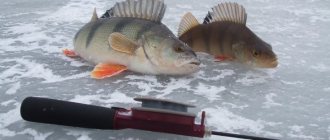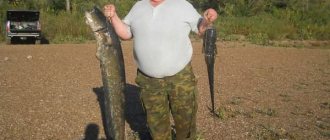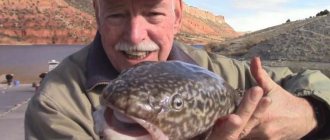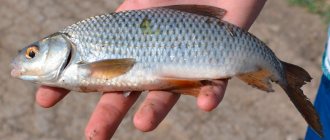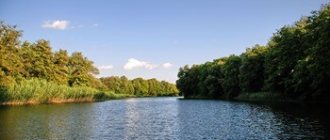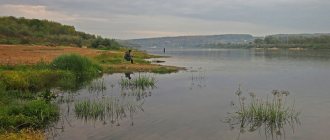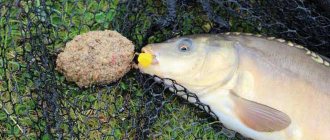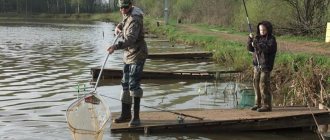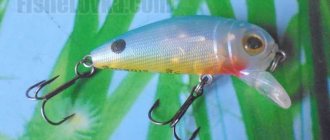Where to go fishing
There are plenty of places for successful fishing of different species in Belarus, it all depends on the personal preferences of the fisherman. The fishing today forum will help you choose, and the Mogilev Fisherman club provides detailed information about where and what to catch.
The most famous places are:
- Narochansky National Park, in particular its lakes, are famous for a large number of trophy perch, burbot, pike perch, and there are also a lot of eels here. A total of 25 species of fish will be a worthy catch for both beginners and more experienced fishermen.
- A detailed map of the Mogilev region for fishermen will also point to the Chigirinskoye Reservoir. The places here are picturesque, but people come here not only for the beauty of nature. Large-sized catfish, carp, and bream will be remembered by everyone. In addition to this, you can also catch decent-sized crucian carp here.
- Braslav lakes are more suitable for lovers of fishing from a boat. Spinning anglers are sure to get pike and perch, and they drag rudd and roach onto the float.
- The Neman River will delight those who like to fish for chub; there are a lot of them in this reservoir and its size is impressive. Brook trout and grayling are also frequent guests on fishermen's hooks.
- The Viliya River has become a permanent place of residence for pike perch; in addition to it, various species of fish, including those protected by law, come here from the Baltic to spawn.
Victoria Leshchenko
I've been working hard in the fishing tackle department for the past six years. I can help you assemble almost any gear.
Ask a Question
These are not all reservoirs where fishing is carried out constantly. Catching trophy specimens here does not stop either in open water or after freeze-up.
Although once on the Pronya River near the village of Zagorenka (Mogilev region, Chaussky district) a real giant was caught - 4 kg 800 g. But such fish are extremely rare in our region; on the Dnieper in the vicinity of the city of Mogilev its maximum weight is 1.5 kg . We also successfully catch burbot from the ice in winter. The locations, gear and bait do not change. Only the peg is fixed above the hole, and the fishing line at the bottom should not be more than 2 meters. Those. The length of the rewinding line is equal to the depth + 2 meters. It should be remembered that extreme caution should be used when entering ice on rivers.
Anything can serve as bait for burbot. This is a bunch of worms, and a frog, and chicken intestines, and live bait, and the larvae of May beetles and dung beetles, and pieces of fish. But in my experience, the best bait is fresh dead fish. If there is not enough bait, you can cut larger fish into pieces. I also use frozen fish as bait (store-bought sprat will do). The main thing is that it is fresh; rotten burbot takes worse. Of the other baits, it is better to use worms, but then you need to be prepared for the fact that you will mainly come across burbots of 100-300 g. For live bait, I prefer ruffe, gudgeon, goby, loach and spined lance. I especially want to mention the pinching. Half of the fish found in the stomachs of caught burbots are made up of it. It is quite easy to catch and store; a triangular net with a lower edge 60-70 cm long is enough. The mesh should not be larger than 5 mm. I drag the net along the muddy bottom with grass bushes and through the grass itself. I put the caught spined loach into a container with a wide neck, because... they can breathe atmospheric air. They can be stored on the balcony in a basin all autumn, you just need to change the water every week. The gear for catching burbot is extremely simple. I wind 25-30 m of 0.6-0.8 mm fishing line on a board. The load is usually solid, but can also be sliding. The weight of the load is 150-180 g, because A lighter sinker will easily pull a burbot into stones or snags, where it will tangle the line so that it will have to be torn off. There is also one thing: it is better to place the load on a separate, thinner leash, because sometimes when pulling out a donkey, the load gets caught between the stones, and you have to tear off the donkey, leaving on the bottom both the load and the hooks with a piece of fishing line, and often the caught fish, which then dies. If the load is on a separate leash, then only one load remains at the bottom. I use large hooks. For worm N6-8, for live bait N10-12 or doubles N6-7. The use of tees is not advisable because when pulled out empty they often catch on the bottom. I use fairly thick leashes 0.28-0.34, because... When caught, burbot often tries to go into the rocks and has to be literally pulled out of there. In general, when fishing, burbot does not offer much resistance. I usually put two hooks on the bottom, if it is caught with a worm or a dead fish, on leashes of 20-25 cm at a distance of half a meter from the load. When fishing with live bait, it is better to use one hook and a sliding weight, and increase the length of the leash to 1 m. The gudgeon, goby and ruffe cling to the lips, and the loach and spined loach cling to the back closer to the head.
Although burbot can be found almost everywhere, in some places its concentration increases several times. This is a place where there are large stones at the bottom, springs gush out, or a stream or rivulet flows into the river. There are usually burbot camps here. But before you catch burbot all night, you should check this place out. 4-5 donks are placed at night, and in the morning they are checked. If there are 3-4 burbot on the hooks, then you can go here for the night. When fishing overnight, I set donks before dark. Usually the burbot sits securely, and it is very difficult to remove the hook without an extractor. The main bite begins an hour after sunset until one in the morning, then from four until dawn. I collect donks an hour after sunrise. The weather has almost no effect on the burbot bite; only the full moon can slightly reduce it.
This nocturnal predator with the head of a frog in the Vitebsk region is usually caught using a bottom bait. The most important factor that attracts fish to bait is, of course, the smell. You can stab live bait, which creates the effect of a wounded fish, but this does not benefit the live bait itself. I offer tackle without many disadvantages. It is based on a 0.5-liter plastic mineral water bottle. Using a knife, we make holes in it with a diameter of 1 cm across the entire surface. This is a load! We tie the bottle by the neck to the fishing line of the girder. Leashes need to be tied through carabiners just above the weight bottle. There can be from 1 to 3. Single hooks are better, less tangled. We put several cut, or better yet crushed, freshly caught fish into the bottle. We hook small ruffs onto both lips. For loading, add some small pebbles or sand. We carefully lower the tackle to the bottom - the bait will spread the smell far, attracting burbot, which has an excellent sense of smell. This type of bait “works” especially well in river holes, where the current further enhances the effect, but lake burbot will not pass by the seductive smell without trying the bait. Discuss this article on the forum
Author: Igor Shishov
Rivers
Small rivers and larger water arteries flow through the territory of Mogilev and the region, so fishing on the rivers is a common activity here. Everyone chooses where to go on vacation independently, but according to members of the Mogilev Fisherman club, the three rivers of the region are considered the most popular places.
Fishing on the Dnieper
The fishing reports of many fishermen who spent time doing their favorite pastime on the Dnieper within the city vary greatly. More experienced explorers have long studied the places, identified the most promising ones and keep them secret. That is why their catch always causes envy and pride among others. Beginners usually have less luck; at best, they end up on the hook for:
- roach;
- breams;
- silver bream
A spinning angler will rarely be pleased with a perch or a small pike.
To be sure to get your catch, you need to get out of the city, while the best places for fishing are considered to be places downstream 15-20 km. Catfish, pike perch, and pike become trophies here.
Sozh River
This waterway stretches for 640 km, it remains one of the cleanest in all of Europe. In Belarus it flows in the Gomel region and the Mogilev region.
There is fish here, but you need to know the places and use the right fishing methods to always be with a catch. Most often, the fishermen are on the hook for:
- pike perch, which can be caught even during the daytime;
- pike;
- perch;
- silver bream;
- bream;
- roach;
- a lot of high water;
- In the spring, catches of sabrefish are pleasing.
For fishing on the river, you need to choose durable, but not too thick, fish here often notice changes and are wary of ropes even with a tempting bait.
Catfish are caught less often, but it is still possible to catch such a resident if you have the appropriate gear and skills.
Drut River
Fishing in Mogilev on the Dnieper, or rather on its right tributary, has always caused controversy. The Drut River could please with catches for a couple of years, and then the fish in it seemed to disappear for a certain period of time.
Now the waterway, which flows in three regions, often pleases both local fishermen and guests of the region with different kinds of fish:
- pike;
- perch;
- asp;
- chub;
- catfish;
- roach;
- silver bream;
- filberts;
- bream;
- language
People go here to fish all year round, but in winter the catches are most pleasing.
There are other waterways in the region, there is enough fish in them, but for some reason the fishermen liked the ones described above.
Fishing in the region's reservoirs
Fishing in the Mogilev region is often more productive than fishing within the city limits. There are several reservoirs that are always popular with local and visiting anglers at any time of the year.
Sozh
The Sozh River originates in Russia in the Smolensk region. In the upper reaches it is a very small water artery with a width of 10 to 30 m. Flowing through the territory of Belorui, the reservoir significantly increases in size. In the Mogilev region, its width is about 250 m, and its depths can reach six meters.
This river is considered one of the cleanest in Europe, since along its entire length there are no industrial enterprises or large settlements. Having visited Sozh, you can excellently catch both peaceful and predatory fish. Throughout the entire period of open water, you can meet spinning fans here. If you manage to choose the right artificial bait and type of fishing, then in a morning you can catch about a dozen pikes, the average weight of which ranges from one to three kilograms.
Armed with ultralight spinning tackle, you can always count on catching a perch weighing 200–600 g. The striped predator prefers to peck on small vibrating tails 5–7 cm long, mounted on a jig head weighing 4–7 g. In the coastal zone, it can often be seduced by:
- wobblers such as “shad” or “crank”, which go half a meter from the surface;
- rotating spoons No. 0–2;
- a variety of surface baits.
The best time for fishing for perch on the river is August–September. It is during this period that you can count on catching a trophy specimen.
On a note! Catching asp on Sozh can also be very interesting. Experienced spinning anglers regularly catch fish weighing 3–4 kg.
Summer is the most favorable season for fishing this predator. It should be noted that the best asp bait on a pond is considered to be a popper.
Drut
The Drut River is one of the tributaries of the Dnieper and is characterized by a highly winding channel and low flow speed. The bottom of the reservoir is quite flat and only at sharp turns do holes form, which are a haven for many underwater inhabitants.
The banks of the Druti are steep, so there are very few convenient approaches to the water. The bottom is sandy, but in some areas there are rocky rifts. In the river you can catch:
- bream;
- silver bream;
- roach;
- perch;
- asp;
- soma;
- ide;
- chub;
- pike.
The bulk of “white” fish is caught in the spring. For fishing, both Bolognese and feeder tackle are used. The most catchy bait is considered to be a worm and large maggots. If the fisherman managed to collect caddisfly larvae at the bottom of the reservoir, then this bait will be beyond competition.
Fishing competitions using float gear are regularly held in the vicinity of Mogilev.
In summer, chub and asp are actively caught on the river. Of all fishing lures, local predators prefer small floating wobblers of the “minnow” class. If we are talking about fly fishing, then streamers of dark colors with a length of 4 to 10 cm will be more effective.
Pike, perch and catfish begin to feed intensively when the water cools down to 15 degrees. The peak season for these predators occurs in the second half of September and October.
On a note! During the freeze-up period on Druti, girder fishing and fishing with winter artificial baits are very effective.
Chigirinskoye Reservoir
The Chigirinskoye reservoir in the Mogilev region is famous for its record numbers of pike. News about the capture of a toothy predator weighing more than 12 kg regularly comes from this reservoir. Such individuals ignore small baits and are more often caught on crankbaits and wobblers with a length of at least 20 cm. In winter, they are caught on jig tackle, using roach or perch weighing 60–80 g as live bait. In addition to pike, you can catch here:
- asp;
- crucian carp;
- bream;
- roach;
- silver bream;
- pike perch.
In the fall, the trophies of spinning anglers are often catfish weighing up to 20 kg, which respond to jig baits intended for fishing for pike perch. Larger mustachioed predators prefer to peck at quok. In this case, the bait is a crawler, a frog or a small asp.
Fishing in Mogilev and its environs will be of interest to both fans of fishing with a float and feeder, and spinning anglers. Many fishing spots can be easily reached by car.
Lakes and reservoirs
Fishing reports on forums often describe fishing not only in the current. The still water of the region has no less attractive species; you can easily catch pike, ide, pike perch, as well as many peaceful species of fish in lakes and reservoirs.
Near almost every settlement there is a lake or pond; this is where local residents come to spend their free time doing their favorite pastime. Moreover, the chances of catching a trophy pike in a large reservoir and a small reservoir, which is not even on the map, are approximately the same.
The map of the Bobruisk region, and the entire region, is simply dotted with small bodies of water with stagnant water, and these are the ones most often visited by fishermen:
- The Chigirinskoye Reservoir will be a wonderful vacation spot for the whole family;
- fishing in Bobruisk is very diverse, but if you want complete unity with nature, and in fishing it is not the result that is important, but the process itself, feel free to go to Lake Vyahovo;
- The reservoirs of Shklov and district 4 are popular
- Loktyshkoye Reservoir is also often heard by fishermen.
Some fishermen simply get in a car and drive in any direction; along the road near a populated area, even the smallest one, there will definitely be a body of water for a pleasant pastime.
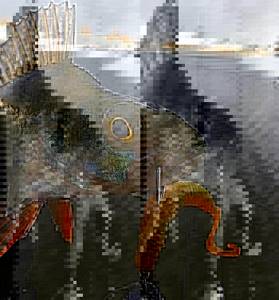
in spring
It is worth immediately noting that it takes about two months from the complete melting of the ice to the absolute restoration of the river level. In May, there are floods in the fields of the Dnieper, and the old-timers know exactly where to find depths suitable for casting from the coast. The fish are quite hungry at this time of year; bream respond even to simple plant bait. In calm conditions, large individuals hunt for mosquitoes and midges swarming above the water. The fishermen promise that fishing in Mogilev will be near Bykhov, downstream just below the village. Enter at the very end of Bykhov, behind the outer buildings, turn left, then straight to the beach, then right along the oxbow and the shore.
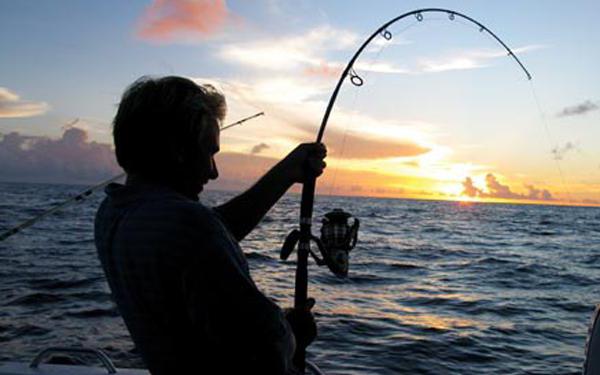
Paid fishing
The fishing service in the region has been developing for a long time, most often guests use paid reservoirs, but some local residents during their vacation prefer not only to admire the beauty of their native land, but also to fish.
Basically, paid reservoirs are equipped with everything necessary for visiting guests; the price of the tour includes:
- car parking;
- cozy apartments;
- one or two meals a day.
Some immediately include fees for the use of watercraft in the price. You can fish on platforms from different parts of the reservoir; some prefer fishing from the shore; for others, bridges and piers seem more promising, and there are also lovers of boat fishing.
Most bases will also offer beginners gear for fishing on this particular reservoir; they can be rented or purchased. If there is a shortage of groundbait or bait, it is also possible to purchase what is missing in small shops on the shore.
Secrets of success in Mogilev
Of course, you need to look at the fishing forecast and take into account weather conditions, too, but there are other secrets to successful fishing that are specific to the chosen vacation spot. The components of successful fishing are quite simple, but you need to know them. To ensure that your catch is always excellent, you should take certain things responsibly.
Lure
The use of feeding mixtures to attract the attention of peaceful fish species is mandatory. There is enough food supply in the reservoirs of the region, but the fish do well on bait. A purchased mixture or one you prepare yourself will be an excellent lure:
- carp;
- bream;
- crucian carp.
Catching these types of fish on a feeder without using bait and pre-feeding the area will not bring the desired result.
Tackle
The gear used is varied, it all depends on the planned type of fishing:
- To catch pike, perch, pike perch, chub, and yacht, you will need a durable spinning rod with a fishing line at least 0.25 mm thick. A leash is required, since the likelihood of snags in almost all reservoirs in the region is very high.
- Fishing with a feeder involves the use of high-quality forms; the maximum casting weight and length will vary depending on the chosen fishing location. For rivers and reservoirs, the fishing rod is taken longer, and the upper limit of the weights used should be higher. Lakes and ponds will require the use of lighter types of equipment.
- Donks and baits for catfish should have a decent margin of safety, because the local reservoirs are famous for catching huge specimens of this type of fish. Crocodiles are used as rods, and reels are mounted on them with excellent traction characteristics.
- Floats are collected of different types; in the spring you will need thinner and more delicate tackle, but in the summer and autumn it is better to make the equipment more durable and put the hooks a couple of sizes larger.
In addition, it is often fashionable to find this type of tackle on the shore, such as an elastic band; crucian carp and crucian carp are fished with it here.
Spring period
Immediately after the ice melts in the reservoirs of Mogilev and the region, sabrefish fishing is successfully carried out; perch and pike respond well to silicone baits; with a feeder with a feeder you can catch hefty carp, bream or crucian carp. After the temperature rises, other inhabitants of the reservoirs will begin to come out to the shallows, but immediately after the formation of thawed patches, it is still possible to catch burbot, which is not difficult to find in these places.
The gear used is not thick; during this period the fish are not yet so active. Edible silicone will work best as bait for predators; worms, bloodworms and maggots are suitable for peaceful fish; plant baits will start working in mid-May.
Fishing in summer
With the onset of fine summer days, nature attracts more and more people to the pond. For fishing to be successful, it is necessary to properly equip the rods:
- The base is thicker, especially if you plan to fish for catfish.
- The hooks are also a couple of sizes larger.
- Silicone is used less frequently as predator bait; using wobblers will be more effective.
- For peaceful fish, it is worth trying vegetable baits.
- Fishing is best done in the morning and closer to the evening dawn.
Victoria Leshchenko
I've been working hard in the fishing tackle department for the past six years. I can help you assemble almost any gear.
Ask a Question
It is necessary to use bait for carp, bream and crucian carp; fish go better to places with constant feeding.
Autumn fishing
A decrease in temperature also affects the activity of residents of reservoirs; at this time, fishing is carried out throughout the day, and not just in the morning and evening. In cloudy weather, predators are excellently caught, in particular pike; they can be caught using almost any bait; large-sized spoons will be especially successful.
Winter fishing
Fishing continues even when there is freeze-up; in the region, large specimens of pike are often caught on baits and mugs; burbot also often pleases with its size. They use jigs and spinners to catch perch, and bloodworms attract the attention of roach and crucian carp.
In winter, fishing is carried out both in free reservoirs and in paid areas.
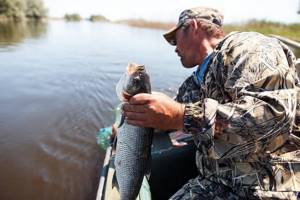
Fish biting forecast in Mogilev and the Mogilev region
| Weather forecast and fish bite | Mogilev, from 02/16/2021 to 02/19/2021 | |||||||||||
| VT | SR | Thu | PT | |||||||||
| Times of Day | Evening | Night | Morning | Day | Evening | Night | Morning | Day | Evening | Night | Morning | Day |
| Cloudiness, precipitation | Partly cloudy | Mainly cloudy | Mainly cloudy | Mainly cloudy | light snow | Partly cloudy | Partly cloudy | Partly cloudy | Partly cloudy | Partly cloudy | Partly cloudy | Partly cloudy |
| Temperature °C | -12 | -12 | -10 | -12 | -6 | -16 | -19 | -21 | -14 | -19 | -22 | -19 |
| Pressure, mm. | 769 | 766 | 764 | 762 | 762 | 763 | 765 | 767 | 770 | 773 | 774 | 774 |
| Direction, | Wind southwest | Wind southwest | Wind southwest | West wind | North wind | North wind | North wind | North wind | North wind | North wind | West wind | Wind southwest |
| wind speed | 5 m/s | 5 m/s | 4 m/s | 3 m/s | 3 m/s | 3 m/s | 3 m/s | 4 m/s | 4 m/s | 3 m/s | 1 m/s | 1 m/s |
| According to the forecast, they will bite on: bloodworms crucian carp | 50% | 0% | 55% | 55% | 30% | 0% | 45% | 45% | 35% | 0% | 60% | 60% |
| According to the forecast, they will bite on: bloodworms Carp | 25% | 0% | 20% | 20% | 5% | 0% | 10% | 10% | 10% | 0% | 25% | 25% |
| According to the forecast it doesn't bite White amur | 0% | 0% | 0% | 0% | 0% | 0% | 0% | 0% | 0% | 0% | 0% | 0% |
| According to the forecast it doesn't bite Silver carp | 0% | 0% | 0% | 0% | 0% | 0% | 0% | 0% | 0% | 0% | 0% | 0% |
| According to the forecast it doesn't bite Carp | 0% | 0% | 0% | 0% | 0% | 0% | 0% | 0% | 0% | 0% | 0% | 0% |
| According to the forecast, the fish will bite on: live bait (jigs), winter spinners, balancers Pike | 50% | 25% | 75% | 75% | 50% | 0% | 45% | 45% | 35% | 0% | 60% | 60% |
| According to the forecast, they will bite on: bloodworms, winter spoons, balance beams Perch | 60% | 0% | 65% | 65% | 40% | 0% | 55% | 55% | 45% | 0% | 70% | 70% |
| According to the forecast, the fish will bite on: live bait, winter spinners, balancer Zander | 60% | 55% | 65% | 45% | 40% | 45% | 55% | 35% | 45% | 45% | 70% | 50% |
| According to the forecast, the fish will bite on: bloodworms, oparish, small spoons Chekhon | 50% | 0% | 50% | 50% | 25% | 0% | 45% | 45% | 35% | 0% | 60% | 60% |
| According to the forecast, they will bite on: bloodworms, maggots, bark beetles, burdocks Ruff | 50% | 35% | 50% | 45% | 25% | 30% | 45% | 40% | 35% | 30% | 60% | 55% |
| According to the forecast, they will bite on: bloodworms, maggots, bark beetles, burdocks Chub | 50% | 20% | 60% | 45% | 20% | 10% | 50% | 35% | 30% | 10% | 70% | 55% |
| Doesn't bite Asp | 30% | 0% | 30% | 10% | 0% | 0% | 20% | 0% | 10% | 0% | 40% | 20% |
| According to the forecast, they will bite on: maggot, bloodworm Rudd | 50% | 0% | 50% | 50% | 20% | 0% | 40% | 40% | 30% | 0% | 60% | 60% |
| Bait: maggot, bloodworm Bream | 50% | 55% | 50% | 40% | 20% | 45% | 40% | 30% | 30% | 45% | 60% | 50% |
| Bait: no Tench | 0% | 0% | 0% | 0% | 0% | 0% | 0% | 0% | 0% | 0% | 0% | 0% |
| Bait: worm, live bait, spinner Burbot | 60% | 90% | 80% | 50% | 60% | 50% | 40% | 10% | 40% | 50% | 60% | 30% |
| Bait: maggot, bloodworm Roach | 50% | 0% | 75% | 65% | 40% | 0% | 55% | 45% | 35% | 0% | 70% | 60% |
| Bait: maggot, bloodworm Bleak | 50% | 0% | 50% | 50% | 30% | 0% | 50% | 50% | 40% | 0% | 60% | 60% |
| Bait: maggot, bloodworm, bark beetle Ide | 40% | 0% | 40% | 30% | 10% | 0% | 30% | 20% | 20% | 0% | 50% | 40% |
| Bait: no Som | 0% | 0% | 0% | 0% | 0% | 0% | 0% | 0% | 0% | 0% | 0% | 0% |
Meanings of symbols and colors of the bite forecast table
| Mon | Monday |
| Tuesday |
| Wednesday |
| Thursday |
| Friday |
| Saturday |
| Sunday |
| Probability of a bite in % (from 0 to 100) |
